Try These Chef-Approved Ingredient Swaps For An Even Better Homemade Vinaigrette
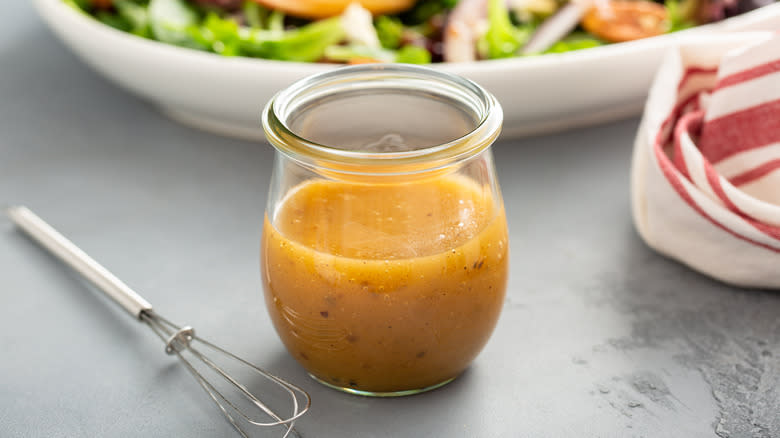
As a chef who loves to cook, I've laid out some simple substitutions that are approachable and delicious to give your homemade vinaigrette a boost. Whether you're new to homemade vinaigrette or a well-seasoned pro, having a few tricks up your sleeve is well worth your while. Experimenting with switching out different ingredients in your recipes is a great way to make your cooking more flexible and keep things interesting on the plate.
Healthy and delicious, making dressing from scratch allows you to have complete control over the vinaigrette's ingredients and flavor profile. Vinaigrette recipes are often very simple, combining a mixture of vinegar (usually red wine, white wine, or balsamic), olive oil, dijon, garlic, and seasonings. That said, substituting some of these ingredients can be surprisingly delicious. The end result can be used to infuse a tangy punch of flavor into everything from salads and sandwiches to grilled meats and roasted vegetables.
Read more: French Cooking Tricks You Need In Your Life
Swap Oil For Cashew Milk
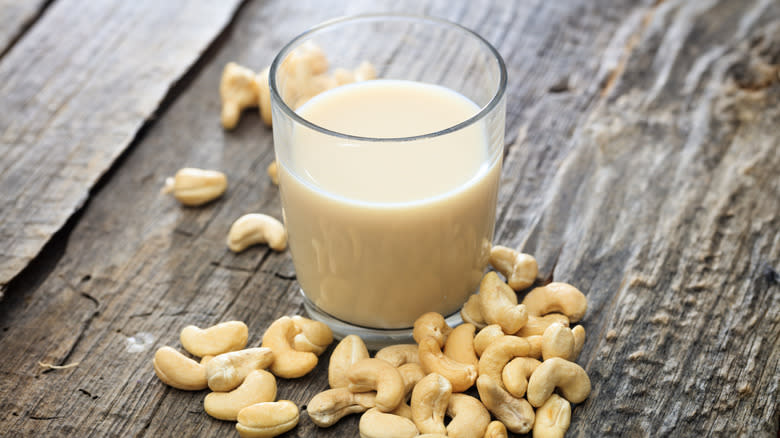
When you're making vinaigrette, try swapping the oil in the recipe for cashew milk instead. Of course, it's not actually milk — but for a seed harvested from a tree (that's right, it's actually not a nut), it sure does mimic milk's consistency with surprising accuracy. The cashew milk contains less fat and it will balance out the vinegar, garlic, Dijon, and seasonings. It is a great option for anyone seeking non-dairy options, and it also comes loaded with a wide range of potential health benefits, including improving heart health, blood sugar, collagen production, and strengthening the immune system.
Making cashew milk is super simple. All you have to do is soak raw cashews in hot water, strain them, then blend them with more water. You can also let them soak in room temperature water overnight. Before blending, add a pinch of salt and a little sweetener, such as agave or honey, to add some depth of flavor. Once the cashews are well-blended, it should look creamy and slightly frothy. At this point, the cashew milk can be bottled or used.
Sub Dijon For Avocado
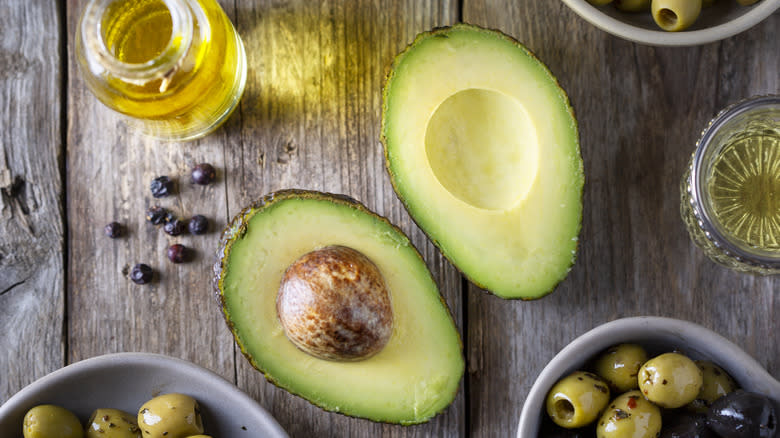
Dijon is a pretty standard ingredient in vinaigrette. The mustard adds its distinctive tang and also helps emulsify the dressing. For the uninitiated, an emulsifier helps different ingredients mix and bind together into a unified consistency. And while Dijon does a wonderful job at emulsifying salad dressings, it's still fun to play around and try out some other options. The next time you're whipping up a batch of vinaigrette, try giving avocado a whirl and subbing it for Dijon mustard.
The trick here — as is often the case when using avocado for anything — is making sure that you cut open your avocado in its prime. If it is overripe, the texture will be too mushy. But perhaps more importantly, an overripe avocado will impart an unpleasant bitterness in the vinaigrette. If the avocado is underripe, it will be too firm to bind the other ingredients together. But when it's just right, it will make a delicious and creamy vinaigrette that pairs beautifully with all kinds of grilled meats, salads, and tacos. If you're looking for the secret on how to ripen avocados, you can speed up the process with a banana.
Use Shallots Instead Of Garlic
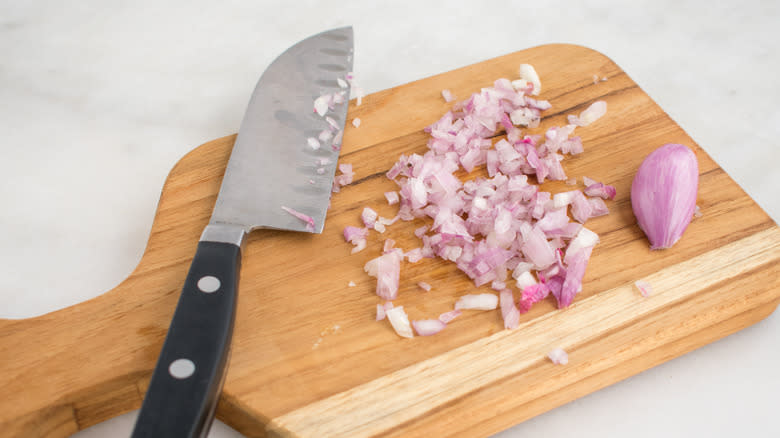
Make no mistake: Despite my suggestion here, I'm still a garlic lover. One of the main reasons that I loved living in Korea so much was how socially acceptable it was to eat whole cloves of garlic at barbecue restaurants. At the same time, I understand that garlic isn't for everyone. Though it mellows out when cooked, it has a pungency that can be excessively assertive when left raw. Garlic has a habit of inherently taking the spotlight, and sometimes you just want to let other flavors shine in your vinaigrette. That's where shallots come in.
Shallots taste like a milder mix of onion and garlic. The taste is far more subtle, yet it still has plenty of flavor to offer. This makes shallots a great replacement for garlic in recipes for people who aren't big fans of garlic or where you're aiming for a more delicate flavor profile. Because shallots are far less bold than garlic, you may need to include a little more in the recipe to taste them. Like garlic, shallots taste more peppery when left raw, but take on sweeter notes the more they cook, so feel free to adjust your approach depending on the recipe and your preferences.
Instead Of Vinegar, Use Fresh Lemon Juice
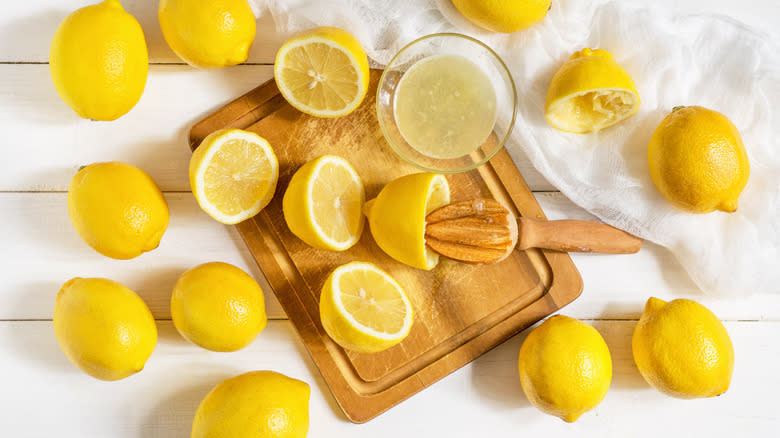
Of course, vinegar is one of the main ingredients in vinaigrette. It adds the necessary acidity that we associate with vinaigrettes, and it's a big part of what makes them taste so bright and refreshing. At the same time, vinegar has a lot of bite — though that certainly fluctuates, depending on the type and brand of vinegar that's being used. When you find yourself craving a more citrusy flavor in your vinaigrette, try juicing some lemons for it instead.
Lemon juice contributes the required acidity in a vinaigrette, but comes with a bit more complexity. It contains a natural fruity tartness that vinegars just can't compete with. If you'd like to liven up your vinaigrette with more layers of citrus, try mixing your lemon juice with juice from oranges, mandarins, or grapefruit. By just including a couple different sources of citrus, you can make a unique and spectacular vinaigrette that's truly mouthwatering. Something to keep in mind: Vinegar has more bite than fresh lemon juice, so your recipe may require more of the citrus juice.
Sub Maple Syrup For Honey
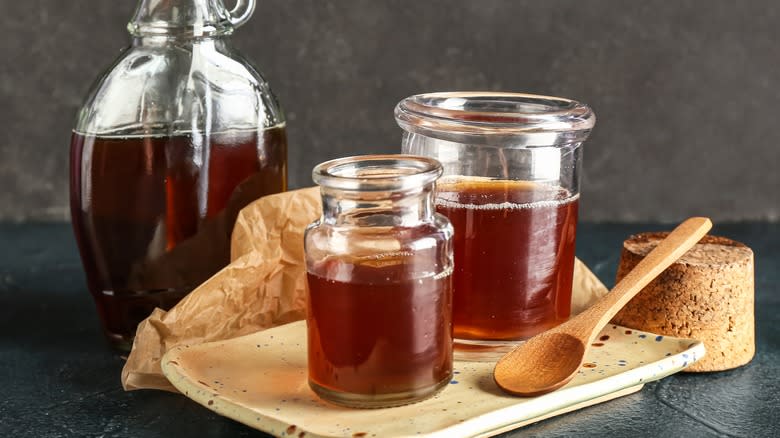
Most vinaigrettes use some kind of sweetener to balance out the vinegar, herbs, oil, and seasonings. Honey is often used and it's easy to see why. It has a smooth consistency that makes it easy to mix into other liquids, and a gentle, floral flavor that's delicious and highly versatile. As amazing as honey is, I like to swap it out for maple syrup on occasions — especially in vinaigrettes.
Maple syrup has a distinctive flavor that makes it one-of-a-kind. There's a woodsy butteriness to it that can add some major oomph to salad dressing. One important note here: Whenever I use maple syrup for vinaigrette, I like using Dijon and apple cider vinegar. The combination of maple syrup and apple cider vinegar is a match made in heaven, and the Dijon ties everything together. This combination works well on fresh greens, but it also works exceptionally well basted onto grilled pork or used as a sweet and tangy dipping sauce for fried chicken.
Rather Than Garlic, Use Ginger
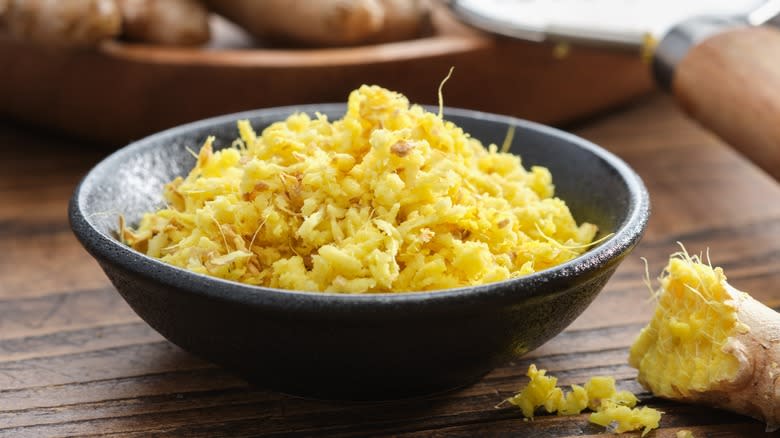
Although a lot of homemade vinaigrettes call for garlic, ginger is an excellent option for replacement. This is particularly useful for Asian-style dishes, such as Korean fried chicken. Truth be told, I tend to almost always use ginger in addition to garlic because I love the combination of their flavors together. But on those days when I suddenly discover — much to my dismay — that I'm fresh out of garlic, I often reach for a bulb of ginger. Garlic and ginger are obviously quite different in how they taste, but they do share a similar warmth and spiciness that's earthy and invigorating.
Sometimes I will just blend the fresh ginger with my other ingredients until its been pulverized and the texture is virtually nonexistent. But other times, when I want the ginger to stand out more in my vinaigrette, I'll grate it separately and then add it in the end. This will give the vinaigrette some texture and guarantee more pronounced little bursts of ginger to enjoy.
Omit The Vinegar And Use Jalapeno Brine
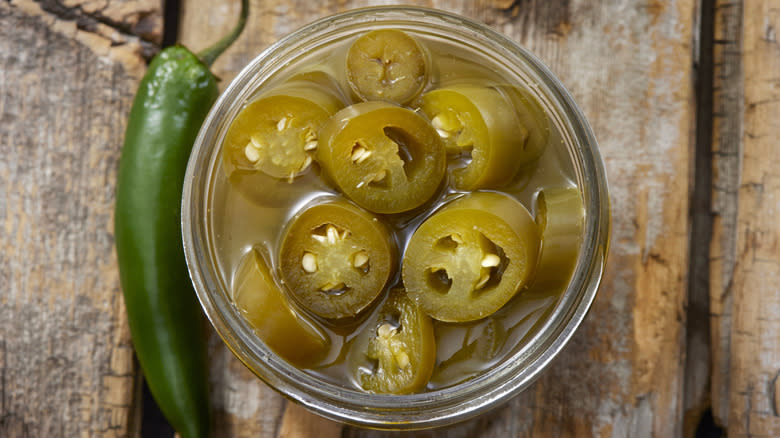
As a chili pepper enthusiast, pickled jalapenos are one of my favorite things to keep on hand in the kitchen. The way I look at it, I'm getting more than just jalapenos — I'm also scoring a jar of delicious brine. Pickled jalapeno brine is the epitome of concentrated flavor. Typically made with a mix of vinegar, salt, and sugar, the brine also has the benefit of being infused with the flavor of jalapenos. Jalapeno brine is excellent for everything from marinating fried chicken and flavoring guacamole to whipping up a batch of vinaigrette.
Substituting vinegar for jalapeno brine couldn't be easier, since they are so similar. Depending on the brand you use, the brine may need to be sweetened up a little to balance out its heat and tanginess. Jalapeno vinaigrette is great on burrito bowls, fish tacos, grilled shrimp, taco salad, and so much more. If you've learned anything here, let it be this: Don't let your jalapeno brine go to waste.
Read the original article on Daily Meal


